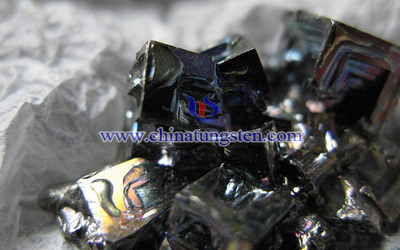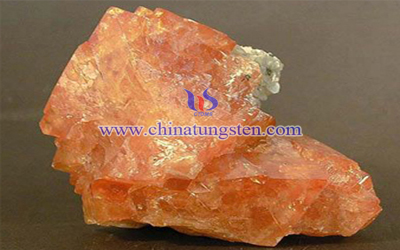Rare Earths Price Index Hits All-Time Low – But Be Careful How You Slice It
- Details
- Category: Rare Earth News
- Published on Wednesday, 10 April 2013 09:38
- Written by Yuri
- Hits: 2420
The monthly Rare Earths MMI® slipped by one point, registering a value of 42 in April – a decrease of 2.3 percent from 43 in March.
Metalminer's rare earth metal prices index continues as the worst performing MMI of all 10 MMI indexes.
“Like we have seen in previous months, we note that the entire Rare Earth index has not slid; rather, the slide comes down to a few key rare earth metals,” said Lisa Reisman, managing editor of MetalMiner.
“In particular, we see price weakness for yttria, samarium oxide, neodymium oxide, lanthanum oxide and europium oxide,” she continued.
The fact that that the price drops continue to impact only a handful of rare earth metals suggests to apply caution to any press or pundit statements slamming the entire sector. Price has been seen weakness in specific metals based upon the supply and demand fundamentals for that particular metal, but other rare earth metal prices remain well-supported, indicating a market in greater balance.
So despite the index registering a value of 42, Metalminer won't draw general conclusions that all rare earth metal prices have declined.
Rare Earth Manufacturer & Supplier: Chinatungsten Online - http://www.chinatungsten.com
Tel.: 86 592 5129696; Fax: 86 592 5129797
Email: sales@chinatungsten.com
Tungsten News & Tungsten Prices, 3G Version: http://3g.chinatungsten.com
Tungsten News & Tungsten Prices, WML Version: http://m.chinatungsten.com
Rare Earths Price Index: Europium Oxide Price Drops on the Week
- Details
- Category: Rare Earth News
- Published on Wednesday, 10 April 2013 09:29
- Written by Yuri
- Hits: 2362
Europium oxide finished as the week’s biggest mover – and, in fact, the only mover after dropping 4.5 percent.
Cerium oxide remained unchanged for the week. The price of dysprosium oxide did not change since the previous week.
Lanthanum oxide, neodymium, neodymium oxide and samarium oxide, among others, also remained essentially flat.
Following a 25.5 percent decline in price, yttria finished the month down hard. A 13.3 percent drop over the past month hit neodymium oxide. Lanthanum oxide prices dropped by 12.8 percent this month. Samarium oxide was down 9.5 percent for the month. After falling 6.8 percent, europium oxide finished the month down as well. Cerium oxide prices fell 6.0 percent. Praseodymium oxide prices decreased by 2.0 percent, and the value of praseodymium neodymium oxide weakened by 1.6 percent. In a whole, rare earth oxides prices fell down in the past week.
Rare Earth Manufacturer & Supplier: Chinatungsten Online - http://www.chinatungsten.com
Tel.: 86 592 5129696; Fax: 86 592 5129797
Email: sales@chinatungsten.com
Tungsten News & Tungsten Prices, 3G Version: http://3g.chinatungsten.com
Tungsten News & Tungsten Prices, WML Version: http://m.chinatungsten.com
Discovery of Rare Earth Metals in Japan Need Technologies
- Details
- Category: Rare Earth News
- Published on Monday, 08 April 2013 09:49
- Written by Yuri
- Hits: 2551
There might be a crack in China's domination of rare earth metals – a mud-filled crack, thanks to a discovery by Japanese scientists. Vast reserves of rare earth metals that can be mined cheaply have been found in deep-sea mud on the Pacific ocean seabed. These essential metals are needed for a wide range of technologies – from consumer electronics like smartphones and TVs to advanced weapons systems and hybrid and electric vehicles.
"We have found deposits that are just two to four (meters) from the seabed surface at higher concentrations than anybody ever thought existed, and it won't cost much at all to extract," said professor Yasuhiro Kato from Tokyo University, the leader of the team, to The Telegraph.

Some of the rare earth metals are found in other parts of the world, but the heavier metals such as dysprosium, terbium, europium, and ytterbium are the most important. After driving rivals out of the business in the 1990s, China became the source of 97 percent of these heavy rare earth metals. In 2009, China decided to restrict exports, which caused protests and legal complaints from the US and the European Union. China's actions also motivated more companies to set up shop in China to access the rare earth metals.
The team of Japanese scientists first discovered the Pacific ocean reserves two years ago, with that supply possibly being 1,000 times the supply of land-based deposits. The team's latest discovery is in Japan's Exclusive Economic Zone in deep-sea mud. It's 5,700 meters below sea level around the island of Minami-Torishama. The researchers says that while the rare earth metals are down deep, they can easily be distracted with minimal disturbance off the seafloor using pressurized air.
Professor Kato thinks the exploration will take another two years before it can be scaled up for production. Over 50 percent of the discovered deposit is heavy rare earth metals and they doen't need the radioactive by-product thorium that makes the metals hard to mine in China.
Rare Earth Manufacturer & Supplier: Chinatungsten Online - http://www.chinatungsten.com
Tel.: 86 592 5129696; Fax: 86 592 5129797
Email: sales@chinatungsten.com
Tungsten News & Tungsten Prices, 3G Version: http://3g.chinatungsten.com
Tungsten News & Tungsten Prices, WML Version: http://m.chinatungsten.com
Establishment of Ganzhou Rare Earth Group Indicates Reconstruction of “4+1” Framework
- Details
- Category: Rare Earth News
- Published on Wednesday, 10 April 2013 08:42
- Written by Yuri
- Hits: 2397
Jiangxi Ganzhou Rare Earth Group was established on March 30. Zhang Anwen, Deputy Secretary General of the Chinese Society of Rare Earths (CSRE), said the establishment of Jiangxi Ganzhou Rare Earth Group marks the formation of “4+1” framework on China’s rare earth industry restructuring.
The “4+1” framework involves Inner Mongolia Baotou Steel Rare-Earth (Group) Hi-Tech (hereinafter referred to as Baotou Steel Rare-Earth), Aluminum Corporation of China (Chalco), China Minmetals Corporation, Rising Nonferrous Metals Share and Ganzhou Rare Earth Group.
Jiangxi Ganzhou Rare Earth Group is the parent company of Ganzhou Rare Earth Mineral Industry and is now the only owner of rare earth mining rights in Ganzhou. Namely, it owns all of the 44 rare earth mining rights in Jiangxi. The group will merge rare earth smelting & separating enterprises and application enterprises in Ganzhou, enabling it to have access to 70-80% of rare earth mining and smelting capacity in Ganzhou. It plans to produce 40,000 to 60,000 mt of rare earth, compared with China’s rare earth mining indicator of 90,000 mt for 2012.
Back in May 2011, the State Council issued the Opinions on Promoting Sustainable and Healthy Development of Rare Earth Industry. According to the opinions, rare earth industry shall be dominated by large firms, and the industry concentration of top three ion-type rare earth enterprises must exceed 80%.

China Minmetals Corporation, Chalco, China Non-ferrous Metal Industry’s Foreign Engineering and Construction (NFC), Jiangxi Copper, Rising Nonferrous Metals Share, Xiamen Tungsten and Ganzhou Rare Earth Industry all tried to join in the merging and restructuring of rare earth industry.
According to Mr. Zhang, Chalco has merged rare earth enterprises in Jiangsu. Rising Nonferrous Metals Share has been in charge of M&As of rare earth companies in Guangdong. Ganzhou Rare Earth Group will be responsible for rare earth industry integration in Ganzhou. China Minmetals Corporation intends to join in restructuring of Guangdong’s rare earth industry following its acquisition of some rare earth enterprises in Jiangxi, Guangxi and Hunan. Baotou Steel Rare-Earth will be responsible for M&As in rare earth industry in north China.
Rare earth industry restructuring in south and north China is led by Ganzhou Rare Earth Group and Baotou Steel Rare-Earth, respectively.
Light rare earth in north China is concentrated in Baotou in Inner Mongolia, Liangshan in Sichuan, Weishanhu in Shandong, while heavy rare earth in south China is centered on Jiangxi’s Ganzhou. Baotou Rare Earth, is actively seeking alliance with enterprises in Sichuan and Shandong.
Baiyun Erbo Rare Earth Mine is China’s biggest rare earth mine, containing 87.7% of rare earth. As Baotou Steel Rare-Earth’s rare earth industry integration accelerates, it will have access to more rare earth.
Heavy ion-type rare earth in Jiangxi accounts for roughly 40% of China’s total ion-type rare earth reserves, most of which is located in Ganzhou. All rare earth mining rights in Ganzhou are exclusively owned by Ganzhou Rare Earth Group.
Rising Nonferrous Metals Share also owns large quantities of rare earth. In comparison, China Minmetals Corporation and Chalco have less rare earth.
Rare Earth Manufacturer & Supplier: Chinatungsten Online - http://www.chinatungsten.com
Tel.: 86 592 5129696; Fax: 86 592 5129797
Email: sales@chinatungsten.com
Tungsten News & Tungsten Prices, 3G Version: http://3g.chinatungsten.com
Tungsten News & Tungsten Prices, WML Version: http://m.chinatungsten.com
Rare Rarth Metals Might Be Less Rare Thanks to Japanese Sea Mud
- Details
- Category: Rare Earth News
- Published on Monday, 08 April 2013 09:20
- Written by Yuri
- Hits: 2403
Hafnium, indium, neodymium, erbium, europium...These are a few of the rare earth metals that make up most of the electronic guts of the world’s high technology.
“Rare earth” refers to the scarcity of easily-mined ores of the elements. Last month, we discussed a breakthrough in large-scale electrolysis that could make refining these ores and oxides much easier; now, Japan’s announcement of the discovery of a huge deposit of rare earths could make the market that much more competitive.
For us, that means cheaper electronics. If Japan can produce its own rare earth metals, as opposed to depending on imports from China (where 97 percent of rare earth metals in the world are produced), then China will have to lower its own prices on metals to remain commercially competitive. Breaking China’s monopoly on rare-earth resources could have wide-ranging consequences for the entire electronics industry.
This is the second major deposit discovery made by Japan in the last two years. A team led by Yasuhiro Kato of the University of Tokyo found caches near Hawaii and Tahiti in 2011 that were so rich in rare earths that one square kilometer of seabed could produce as much as 20 percent of the world’s annual consumption. Now, they’ve discovered a second plot of rich mud at the bottom of the Pacific.
Undersea mining has its own set of environmental issues; it’s not entirely clear yet how the techniques used can disrupt deep-sea life. Kato and his team will be investigating the new cache in a two-year study before attempting to start the mining process.
Rare Earth Manufacturer & Supplier: Chinatungsten Online - http://www.chinatungsten.com
Tel.: 86 592 5129696; Fax: 86 592 5129797
Email: sales@chinatungsten.com
Tungsten News & Tungsten Prices, 3G Version: http://3g.chinatungsten.com
Tungsten News & Tungsten Prices, WML Version: http://m.chinatungsten.com





 sales@chinatungsten.com
sales@chinatungsten.com